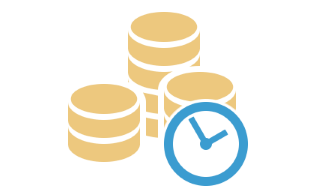One of the main factors of a company’s success is revenue. Some would argue that it is the only factor but that’s another debate. When you sell software applications, as with any other business, ensuring steady revenue is a key factor to growth and stability. Learn how you can avoid fluctuating revenue by implementing a Maintenance Plan for your software application.
When you manage to sell your software to a customer, you have succeeded, but only partially. A customer, if happy with your product, will be interested in continuing to use your product for several years. If like most software companies, you continuously improve the product and release new minor and major upgrades, you have the potential to turn your current customers into buyers again by offering a Yearly Maintenance Plan option.
A Yearly Maintenance Plan typically provides two main benefits to the customer: (a) free upgrades to major versions of your product and (b) extended support via phone or email. The cost of a maintenance plan is calculated as a percentage of the cost of purchase. The standard rate varies from 15% to 25% depending on the added value you provide. You may also have different levels of Maintenance Plans (Bronze, Silver, and Gold) where each level provides additional benefits such as 24/7 support, etc.
Licensing Considerations
If your software is protected with license keys, you will want license keys for an older version of your product to not work with your latest major upgrade. If they did, then all your existing customers will just download the latest version and use their old keys without even purchasing the Maintenance Plan. You don’t want that!
However, issuing new license keys to hundreds or thousands of customers who purchased your maintenance plan, as well as asking them to modify their keys every year would be a major headache both for you the vendor and the customer. You don’t want that either!
The ideal process should be totally transparent and fully automated. Here’s one workflow of what it would like:
- One year after initial purchase, the customer receives an automated email reminder to renew the maintenance plan with a link to the purchase order.
- The customer clicks on the link and fills in the order form. The order form asks the customer to enter his license key along with the traditional order entries.
- The order information is sent to the license server with specific flags indicating that this is a maintenance plan.
- The license server updates the record for this customer and extends the maintenance plan by one year.
- The customer receives an email confirming that the order was processed and instructing him that to just reactivate his current license.
- The customer starts your application and re-activates his license. He is now entitled to free major upgrades until the maintenance plan expires.
From the vendor’s perspective, the process is fully automated. The sale just happens without any manual intervention. From the customer’s perspective, the process is very simple. Place an order and reactivate the license.
Conclusion
Offering your customers a Yearly Maintenance Plan option is a key factor in increasing your sales. The beauty of the Maintenance Plan is that the sale cycle is typically quite short: if the customer likes your product and it continues to provide value to them, they will want to renew. If you notice that customers are not renewing, you should worry! It either means that they stopped using your product or that your new version does not offer any value to them. Stagnant products in a moving market typically experience a slow gradual death. Make sure you listen to your customer’s feedback and keep improving your product. If you do so, they will come back for more!

